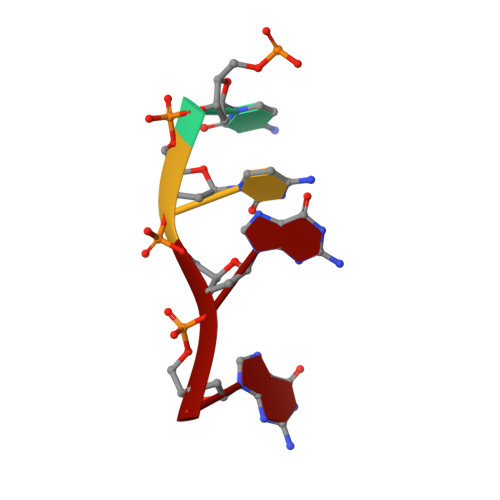Structural characterization of the PCV2d virus-like particle at 3.3 angstrom resolution reveals differences to PCV2a and PCV2b capsids, a tetranucleotide, and an N-terminus near the icosahedral 3-fold axes.
Khayat, R., Wen, K., Alimova, A., Gavrilov, B., Katz, A., Galarza, J.M., Gottlieb, P.(2019) Virology 537: 186-197
- PubMed: 31505320
- DOI: https://doi.org/10.1016/j.virol.2019.09.001
- Primary Citation of Related Structures:
6OLA - PubMed Abstract:
Porcine circovirus 2 (PCV2) has a major impact on the swine industry. Eight PCV2 genotypes (a-h) have been identified using capsid sequence analysis. PCV2d has been designated as the emerging genotype. The cryo-electron microscopy molecular envelope of PCV2d virus-like particles identifies differences between PCV2a, b and d genotypes that accompany the emergence of PCV2b from PCV2a, and PCV2d from PCV2b. These differences indicate that sequence analysis of genotypes is insufficient, and that it is important to determine the PCV2 capsid structure as the virus evolves. Structure-based sequence comparison demonstrate that each genotype possesses a unique combination of amino acids located on the surface of the capsid that undergo substitution. We also demonstrate that the capsid N-terminus moves in response to increasing amount of nucleic acid packaged into the capsid. Furthermore, we model a tetranucleotide between the 5- and 2-fold axes of symmetry that appears to be responsible for capsid stability.
Organizational Affiliation:
Department of Chemistry and Biochemistry, The City College of New York, New York, NY, 10031, USA; Graduate Program in Biochemistry, The Graduate Center of the City University of New York, New York, NY, 10016, USA. Electronic address: rkhayat@ccny.cuny.edu.















